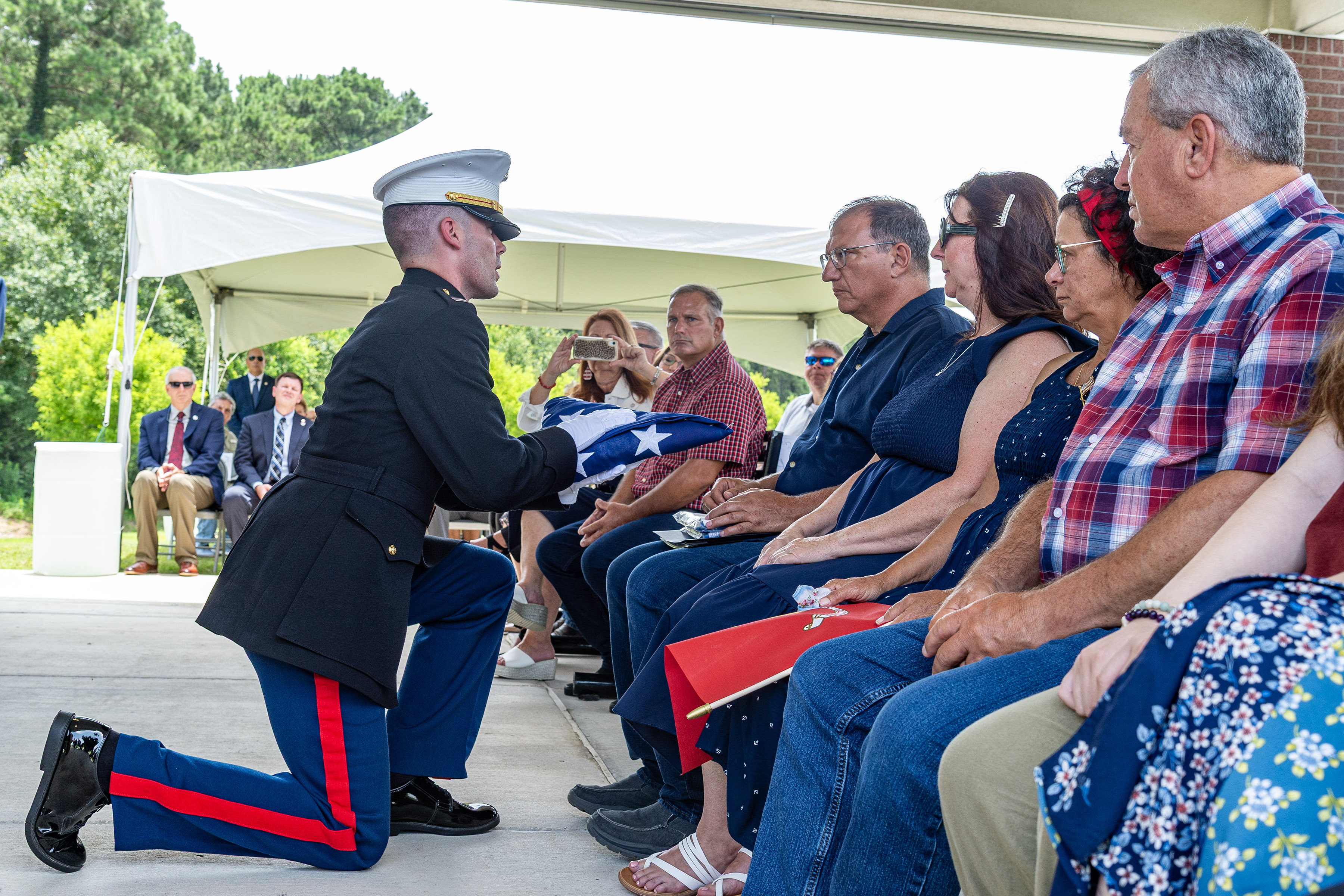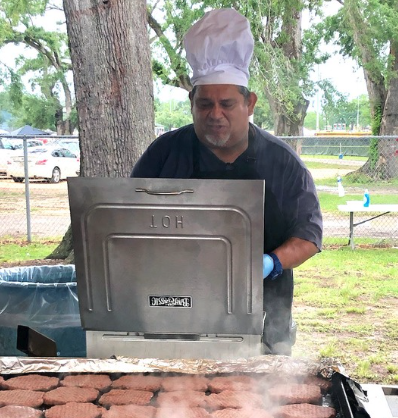There’s no place like Margarat Place for the Wymans
Published 2:30 pm Monday, November 3, 2014
The Margaret Place home of Barbara and Bruce Wyman has received the Better Homes and Gardens national award in 1990 for renovation. Last year it was on the cover of Old-House Interiors. It’s been on Palm Sunday tours. It’s on the Calcasieu Historical Preservation Society landmark list as the John C. Stevens house circa 1920. On the day of the American Press Home and Real Estate interview, Barbara had just said “yes” when the tourist bureau asked if a group could tour her place the next day.
Everyone is interested in this house. The landscaping is the tantalizing appetizer for the perfectly executed interior. This house is warm, inviting and fi lled with “American antiques and handmade old things in the spirit of the arts and crafts movement.” It’s also a great example of a Craftsman Bungalow according to Barbara. She would know. She’s known around town as “Bungalow Barb,” the local expert on the subject.
Maybe it’s because she’s a McNeese professor; seeing her house is not just an appreciated aesthetic experience. It’s educational, an introductory course in the Arts and Crafts Movement. She’s been asked to speak on the subject so many times that she’s developed a presentation that contains some the following information:
The Arts and Crafts Movement flourished in England between 1860 and 1910. In the United States, the terms Arts and Crafts, American Craftsman or Craftsman style are often used to denote the style of architecture, interior design and decorative arts that prevailed around 1910 to 1925.
While Europeans tried to recreate the virtuous craft labor being replaced by industrialization, Americans tried to establish a new virtue: well-decorated middle class homes. Some claimed that these simple, but refined aesthetics would ennoble the new experience of industrial consumerism.
Greene and Greene, two brothers who practiced architecture in California, helped get the style started in the U.S. Once the patterns hit popular magazines (and the Sears and Roebuck catalog kit list), the Arts and Crafts style caught on.
“Bungalow is really a broader term than the way it’s sometimes used,” Barbara explained. So even certain Tudor Revival, English Cottage and other styles may reflect the Arts and Crafts love for honoring the craftsmanship of times past and classified as a bungalow.
She describes Margaret Place as “the quintessential bungalow neighborhood, one of many that popped up all over the U.S. from around 1910 – 1925.” According to Barbara, these little communities were away from the very center of the city, while still being connected by sidewalks.
There were fewer automobiles, thus less traffic. People walked more … talked more. There was no air conditioning. The porch, which the bungalow typically has, came in pretty handy as the place to stay cool, entertain and exchange pleasantries with passersby. People knew and visited with neighbors.
Margaret Place, a protected Lake Charles historical neighborhood, doesn’t just have great examples of bungalows, but it’s also a place where you still have this type of interaction between residents.
Such communities are rare. Communities of bungalows — even more rare. “People want to live in quaint neighborhoods, but they don’t want to live in quaint houses with creaky floors where the doors don’t always work right,” Barbara said. She loves the diversity of the people that live in Margaret Place. “We have young and old, renters and owners, people who live in small houses and people who live in bigger places,” she said.
The Wyman home is on Grove Street. “When you find these type of neighborhoods that have survived, they always have a Grove Street,” Barbara explained. These bungalow communities actually had a grove of trees for residents to appreciate.
When Barbara and Bruce bought their house in 1989, it had been used as rental property for many years. “I run into people all the time that lived in this house or know someone who lived in this house,” Barbara said.
There was no carport or family room. The house had been damaged by fire and when Barbara shows her bedroom during tours she points out charred marks on the wood floor to show the remaining evidence. “This was a house that was unloved,” Barbara said.
She noted that it’s much easier to find Arts and Crafts style décor, hardware and furnishings today than when she renovated the house in ’89. Jeanette Richey, a local decorator, helped Barbara with some of the interior decisions. Since then, Babara’s lightened up the colors in accordance with today’s tastes, while still keeping with the natural style of Arts and Crafts.
The Wyman home contains genuine Arts and Crafts icons: William Morris “Daisy” wallpaper in the dining area, a stool bearing the Roycroft brand, and a piece of Newcomb pottery. Bruce Wyman’s grandmother, Dorothy Martin Beatty, went to Newcomb College. (See sidebar: What makes it Arts and Crafts?)
Currently the Wymans are constructing a small structure behind their Craftsman home, which will mirror the Craftsman style. Brian Trouth is contractor. Barbara calls it a “Garden Folly.” (The word folly has been used to denote buildings constructed for strictly aesthetic appeal.) Though it will definitely please lovers of the craftsman style, the house won’t just look good. It’s being built for overnight guests and to house their daughter Kate’s old style letterpress.
It seems fitting for the daughter of “Bungalow Barbara,” fan of all things lovingly crafted to be an artisan. Kate and cousin Anna Boyer use antique letterpresses to handcraft modern and traditional designs. In the age of the crank-it-out-digitally mentality that is reminiscent of some of the feelings associated with the origins of the Arts and Crafts Movement. Kate and Anna painstakingly use old-fashioned presses to ink and deeply indent patterns into thick, high-quality papers.
To make the off the beaten career path even more interesting, Kate is the great granddaughter of Guy Beatty, who along with J.F. Reed, started the area’s first newspaper in the 1800s. “Her grandmother is always telling her, “Poppy (Guy Beatty) would be so proud of you. You have printer’s ink in your blood,” Barbara said.
Kate was attracted to the concept and apprenticed in Chicago to learn the trade. The first “Grove Street Press” as she calls it, is from Port Printing, a 1910 Chandler & Price that the Jim Canellis had kept in storage for some time for purely sentimental reasons. Kate had to repair and clean the equipment before she could even think about running the equipment. During the construction of its new home, the press is neatly ensconced in its own crate under the Wyman carport.
Though Barbara Wyman has a beautifully decorated home that’s gained recognition in national magazines, her answer to what makes a house a home includes “more than the walls of our house,” she said. “It’s an intangible thing…a sense of place, of belonging…. It’s knowing our neighbors by name and even their pets’ names! It’s being able to walk down the street to eat at Bistro 121 and seeing your neighbors there. It’s waving to almost every single person who walks by, knowing about them, knowing they’d help if we needed it. We could put this house anywhere and love it, but it wouldn’t be the same. Home is belonging — and belonging is being part of a community of neighbors.”





